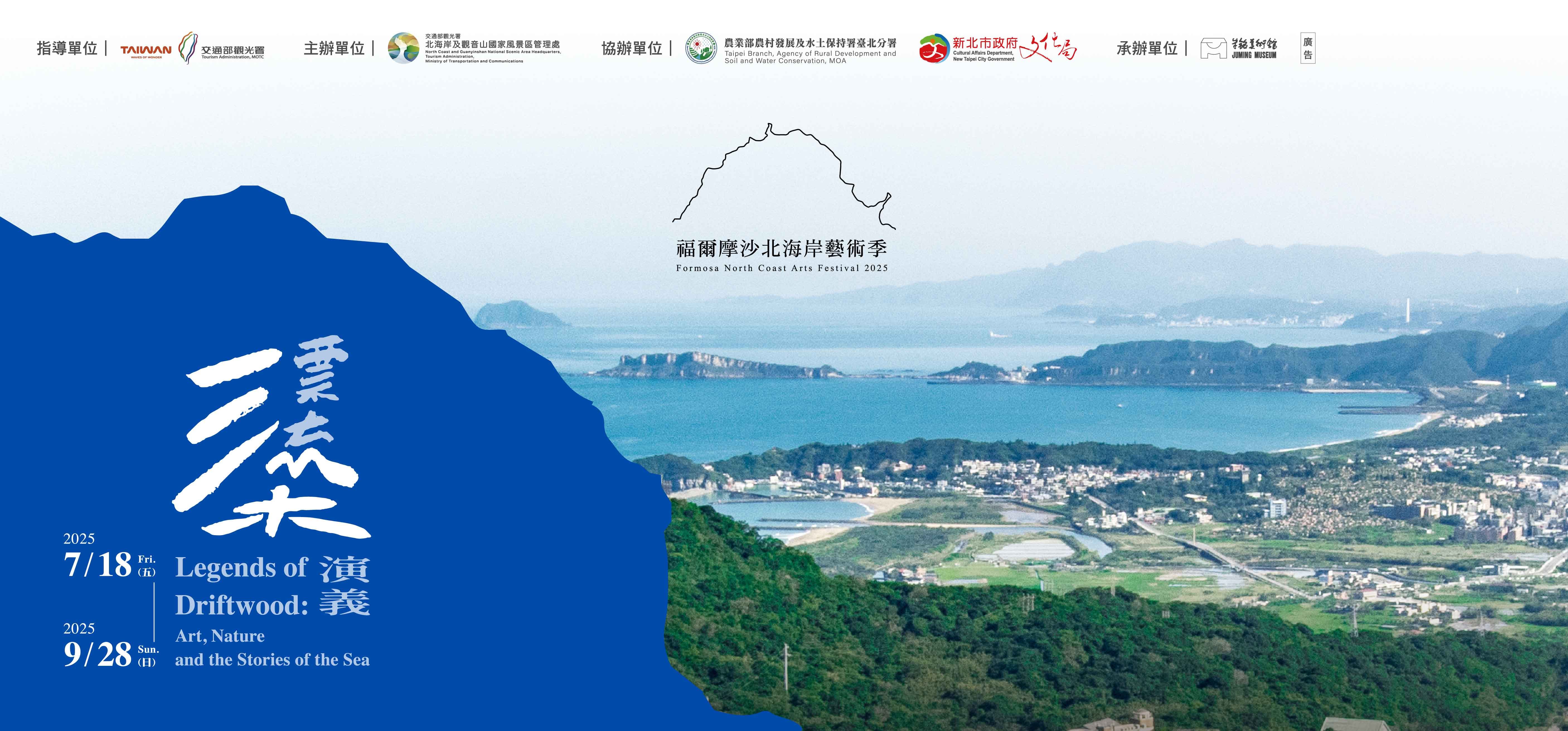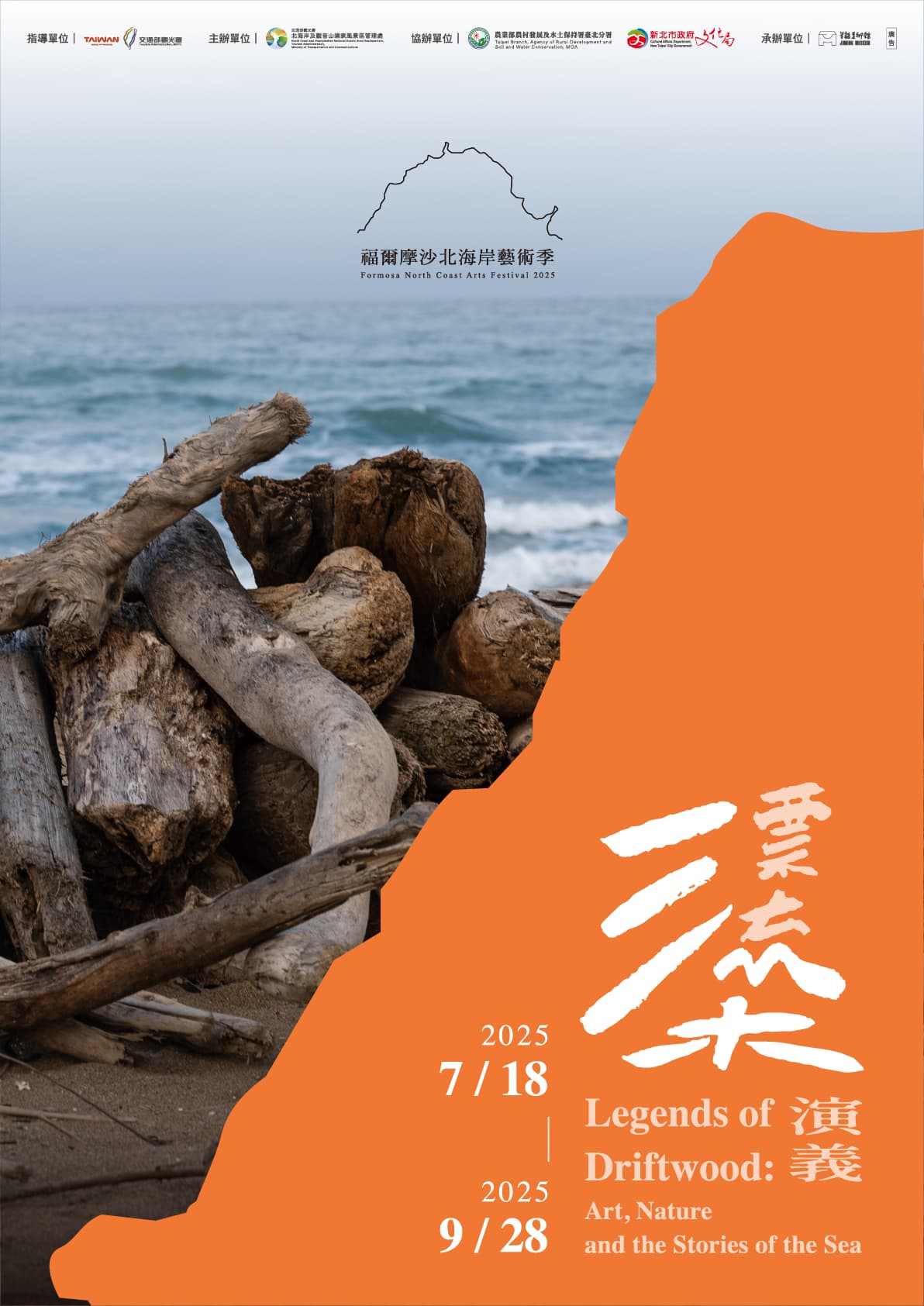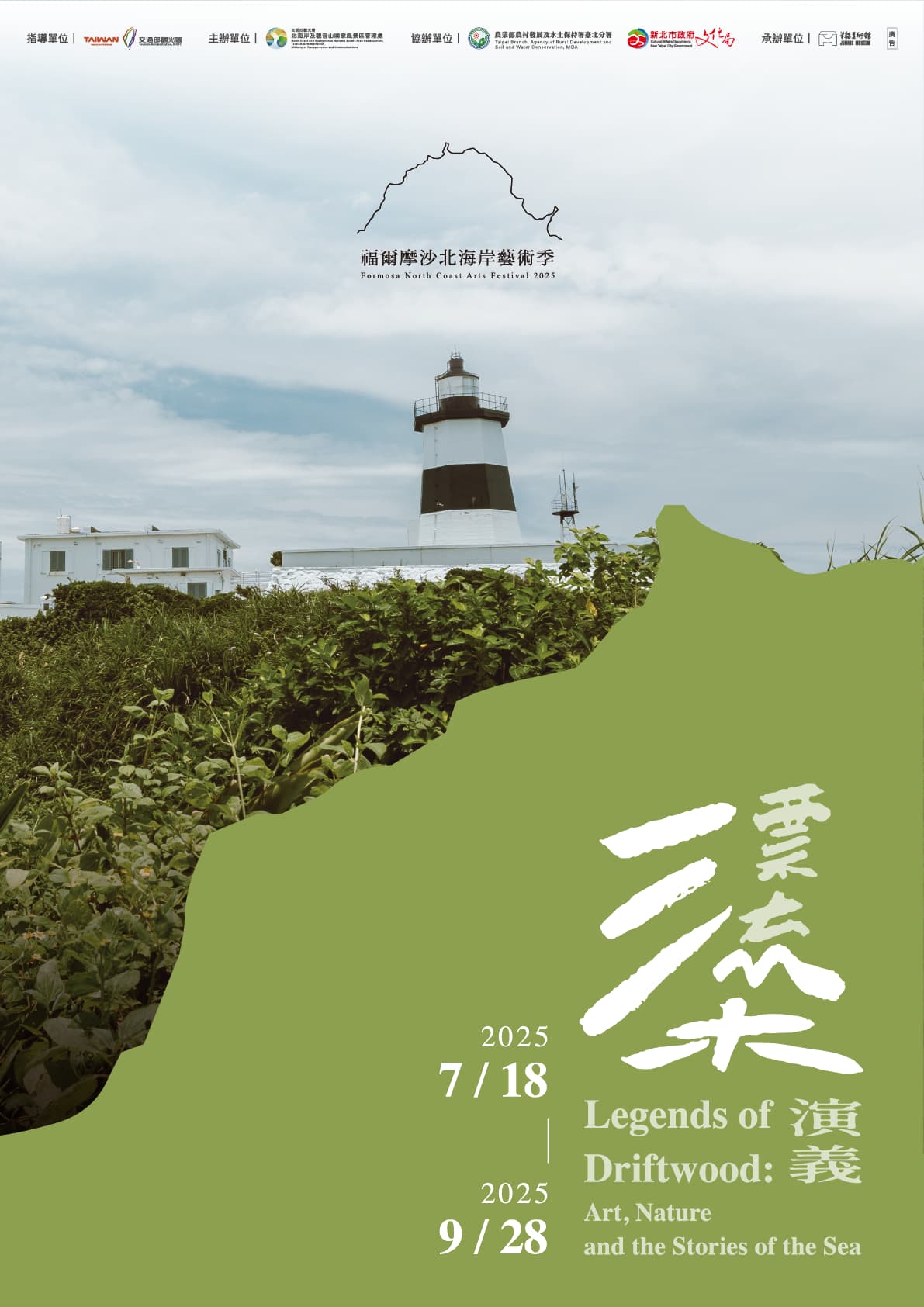|
The 2025 Formosa North Coast Arts Festival: Legends of Driftwood takes driftwood as the medium that bridges nature and humanity. Contemporary artists are invited to create using wood-based materials, breathing new life and meaning into driftwood through artistic intervention. The resulting works reflect the beauty of nature and the transformative power of cultural regeneration.
The arts festival goes beyond the exhibition of artworks, emphasising deep engagement with the local community. Through programmes such as art-in-schools and collaborative projects with local groups, art is woven into everyday life and becomes a driving force for cultural revitalisation. The festival envisions the North Coast as a vibrant site for artistic exchange, cultural connection and ecological sustainability. Through artistic action, it aims to foster ecological awareness and strengthen community bonds, positioning art as a core engine for sustainable tourism. |
class=IntroText流動與變遷的象徵漂流木的形成是時間和自然力量的直接結果,它隨著水流或風的推動漂向未知的地方。這一過程象徵著生命和事物的流動性、無常與不確定性。這種流動可以比擬人生的起伏、記憶的變化,甚至是社會環境的變遷。漂流木作為時間的痕跡,反映出一個個體或文化在歷史的長河中所經歷的變化、遺忘和重生。 |
class=IntroText記憶與歷史的承載每一塊漂流木都可能帶有過去的記憶或是歷史的痕跡。它可能曾經是某棵樹的一部分,經歷過歲月的洗禮,甚至是受到人類活動影響而被帶到海洋或湖泊中。漂流木可以被視為一個“記憶容器”,承載著自然與人類社會間的互動。藝術家可能會藉由這些木材的紋理、顏色和形狀來表達歷史的變化,或通過物件的再生來探討記憶的再現與遺忘。 |
class=IntroText環境變遷與生態意識漂流木不僅是一個自然現象,它也是環境變遷的證據。隨著氣候變化、水位上升和生態破壞,越來越多的漂流木出現在世界各地的海灘和水域中。這種現象使漂流木成為關注環境與生態問題的重要象徵。藝術家可以通過漂流木來表達對自然破壞的反思,或利用這些木材進行回收創作,呼籲觀眾關注可持續發展和環境保護。 |
class=IntroText空間與時間的對話漂流木隨著水流漂移,不僅在物理上移動,也在時間上形成了對話。它的漂流代表了時間的流逝,而每一塊漂流木都擁有獨特的生命軌跡。藝術家可以通過空間的轉換來探索漂流木在時間中所承載的意義,例如將漂流木放置於不同的地點或結合音效和視覺元素來呈現其隱含的時間感。 |
class=IntroText 總結來說,漂流木的演譯概念是一個多層次且富有深度的藝術命題,涵蓋了自然的流動性、生命的過渡、記憶的再現及生態與環境的深刻關聯。它邀請觀眾在藝術的語境中重新認識人類、自然與時間之間的脆弱與共生。 |
class=IntroText |
策展單位簡介Curator’s Introduction |
class=MainTitle Juming MuseumFounded by artist Ju Ming with the mission of promoting sculpture art and children’s art education, the museum has, since its opening in 1999, been dedicated to planting the seeds of art in the hearts of all. The collection features Ju Ming’s iconic series, including The Native Series, The Taichi Series, and The Living World Series. With a strong emphasis on outdoor exhibition spaces, the museum’s powerful sculptures are set against a stunning backdrop of mountains and sea, inviting the public to experience art in harmony with nature. Through exhibitions, workshops, camps, school collaborations and other programmes, the museum continues its long-term commitment to advancing aesthetic education and cultivating lasting roots for the arts in Taiwan. |
class=Curator Curatorline Wave In JinshanDedicated to regional revitalisation and cultural development along Taiwan’s North Coast, founder Tsai Wen-Pei gathered a team of passionate young people who share a deep love for the region. Since 2019, they have been operating Wave in Jinshan through a combination of online podcasts and a multi-functional physical space, showcasing the unique charm of the North Coast. Wave in Jinshan not only uncovers and shares rich local stories, but also provides tangible experiences through its hybrid space, offering food and drink, community gatherings, and travel information. It creates meaningful opportunities for interaction between local communities and visitors, cultivating a vibrant and engaging brand ecosystem that is both enjoyable and purposeful. |
class=Curator PicRight TESA Creative CenterFounded by sculptor Chang Tzu-Lung with the vision of coexisting with nature and promoting ecological sustainability, the art space has, since its establishment in 2019, been dedicated to fostering interdisciplinary dialogue across international culture, artistic practice and ecological discourse. It seeks to enhance the local community’s awareness of aesthetics within public spaces along Taiwan’s North Coast. Since 2023, the initiative has launched a North Coast artist residency programme rooted in ecological sensitivity and environmental sustainability. By incorporating ecological foraging and recycled materials as core mediums, the programme reflects a commitment to the idea of natural regeneration. To date, it has hosted twelve environmental art workshops along the North Coast, using artistic action as a means to connect with and engage surrounding communities. |
class=Curator Curatorline Chamber of Culinary ArtsDedicated to promoting the fish-eating culture of Taiwan’s North Coast, this initiative encourages a renewed appreciation for the value of marine resources and local food traditions through cuisine, hands-on experiences and food education. Founder Chang Cheng-Chung centres the project around catch-of-the-day and seasonal, locally sourced ingredients, emphasising the principles of ‘eat local, eat seasonal’, creating dining experiences that resonates with the environment, connecting fishing villages, the ocean, ingredients, producers and consumers alike. Each dish carries a local story, conveying the essence of the region through taste, sight and touch, while sharing the values of fishing culture and marine sustainability. |
class=Curator PicRight lastCurator Co-curatorTaipei Branch,Agency of Rural Development & Soil and Water Conservation, MOA : Yangzhu International Art Center,Beihai Art Creation X eam No. 2 SpaceYangzhu International Art Center presents a project inspired by the concept of the Datun Satoyama, a term coined to describe the unique ecological and cultural landscape of the Datun Mountain range on Taiwan’s North Coast, where human life and nature coexist in a traditional, sustainable balance. British artist Martyn Barratt and Taiwanese artist Tseng Chun-Hao have been invited to create two site-specific land art installations in coastal rural villages: A Valley Story and Floating Mountain. These works draw upon the spirit of the Datun Satoyama and are deeply rooted in principles of ecological sustainability, realized through in-situ creation that engages with local history, memory, and landscape. “Sweet Potato Kids: Weaving the Future” is a collaborative community art initiative led by local artists and the regional revitalization team Beihai Art Creation × Team No. 2 Space.
Through co-creation with the community, the project embraces values of local harmony and industry learning, using materials and techniques such as bamboo, ceramics, printmaking, and painting to transform memories of the land and culture.
The artworks are showcased directly in seasonal crop fields—like sweet potatoes and radishes—turning the farmland into a vibrant, time-limited exhibition space. |
class=Curator Curatorline lastCurator |
|
| |



















